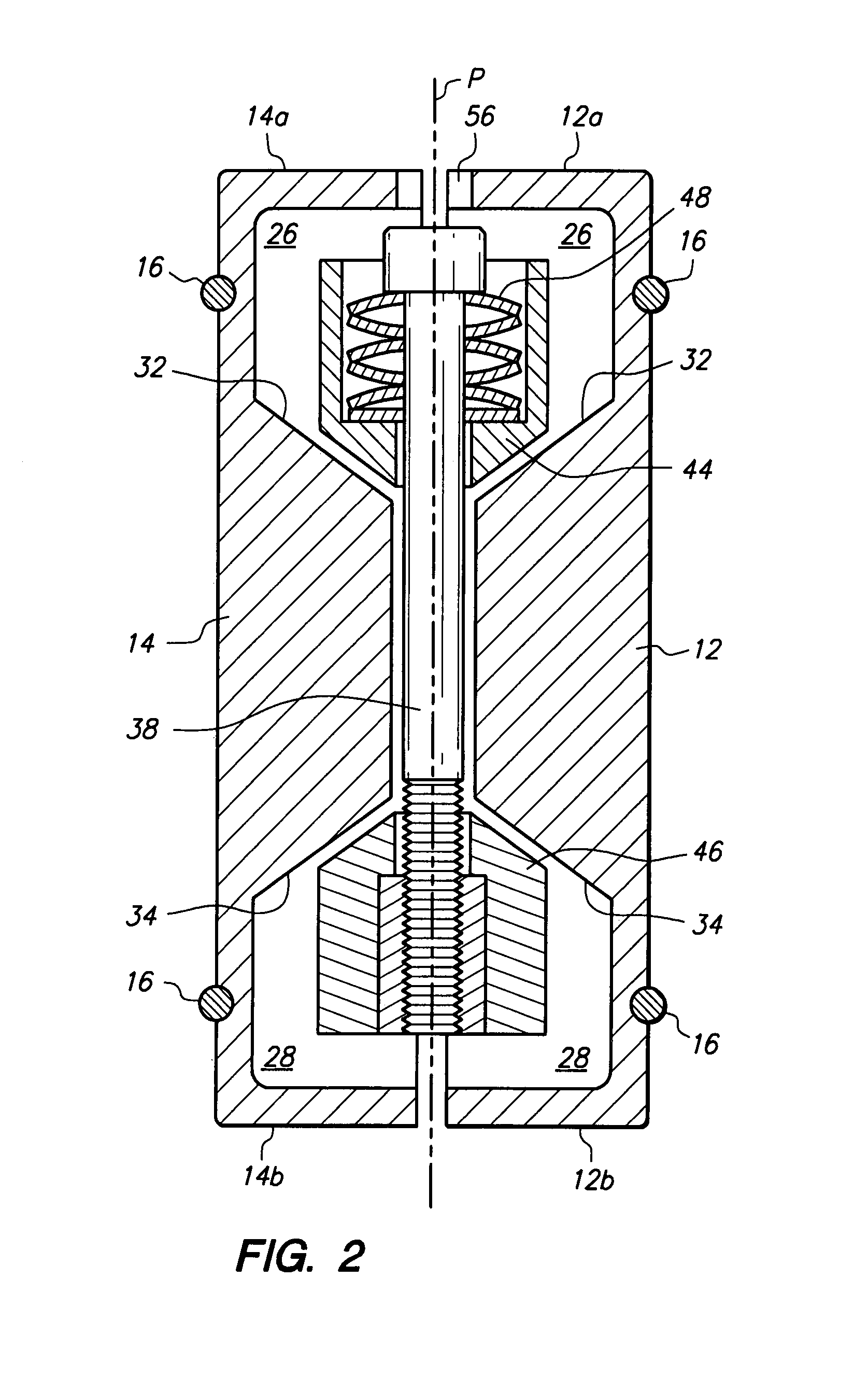Concrete slab joint stabilizing system and apparatus
a concrete slab and joint stabilizing technology, applied in bridges, bridge structural details, roads, etc., can solve the problems of reducing the service life of concrete pavement, and affecting the stability of concrete pavement joints, etc., to achieve the effect of stabilizing loose floor or pavement joints and generating highly concentrated shear forces
- Summary
- Abstract
- Description
- Claims
- Application Information
AI Technical Summary
Benefits of technology
Problems solved by technology
Method used
Image
Examples
Embodiment Construction
[0075]The present invention now will be described more fully hereinafter with reference to the accompanying drawings, in which preferred embodiments of the invention are shown. This invention may, however, be embodied in many different forms and should not be construed as limited to the embodiments set forth herein; rather, these embodiments are provided so that this disclosure will be thorough and complete, and will fully convey the scope of the invention to those skilled in the art. Like numbers in the drawings and the specification refer to like elements throughout.
[0076]As will be described more fully herein below, the present invention provides methods and apparatus for stabilizing a construction joint between two substantially horizontal, substantially planar members. For purpose of explanation, the preferred embodiment of the invention is herein described in applications for stabilizing adjacent sections of on-grade concrete slabs. In the exemplary application described and i...
PUM
| Property | Measurement | Unit |
|---|---|---|
| length | aaaaa | aaaaa |
| length | aaaaa | aaaaa |
| diameter | aaaaa | aaaaa |
Abstract
Description
Claims
Application Information
 Login to View More
Login to View More - R&D
- Intellectual Property
- Life Sciences
- Materials
- Tech Scout
- Unparalleled Data Quality
- Higher Quality Content
- 60% Fewer Hallucinations
Browse by: Latest US Patents, China's latest patents, Technical Efficacy Thesaurus, Application Domain, Technology Topic, Popular Technical Reports.
© 2025 PatSnap. All rights reserved.Legal|Privacy policy|Modern Slavery Act Transparency Statement|Sitemap|About US| Contact US: help@patsnap.com



